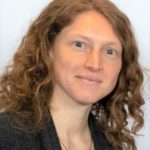Link to Pubmed [PMID] – 24606929
Link to DOI – 10.1016/j.bpj.2013.12.051S0006-3495(14)00086-1
Biophys J 2014 Mar; 106(5): 1044-56
Azimuthal beam scanning makes evanescent-wave (EW) excitation isotropic, thereby producing total internal reflection fluorescence (TIRF) images that are evenly lit. However, beam spinning does not fundamentally address the problem of propagating excitation light that is contaminating objective-type TIRF. Far-field excitation depends more on the specific objective than on cell scattering. As a consequence, the excitation impurities in objective-type TIRF are only weakly affected by changes of azimuthal or polar beam angle. These are the main results of the first part of this study (Eliminating unwanted far-field excitation in objective-type TIRF. Pt.1. Identifying sources of nonevanescent excitation light). This second part focuses on exactly where up beam in the illumination system stray light is generated that gives rise to nonevanescent components in TIRF. Using dark-field imaging of scattered excitation light we pinpoint the objective, intermediate lenses and, particularly, the beam scanner as the major sources of stray excitation. We study how adhesion-molecule coating and astrocytes or BON cells grown on the coverslip surface modify the dark-field signal. On flat and weakly scattering cells, most background comes from stray reflections produced far from the sample plane, in the beam scanner and the objective lens. On thick, optically dense cells roughly half of the scatter is generated by the sample itself. We finally show that combining objective-type EW excitation with supercritical-angle fluorescence (SAF) detection efficiently rejects the fluorescence originating from deeper sample regions. We demonstrate that SAF improves the surface selectivity of TIRF, even at shallow penetration depths. The coplanar microscopy scheme presented here merges the benefits of beam spinning EW excitation and SAF detection and provides the conditions for quantitative wide-field imaging of fluorophore dynamics at or near the plasma membrane.

